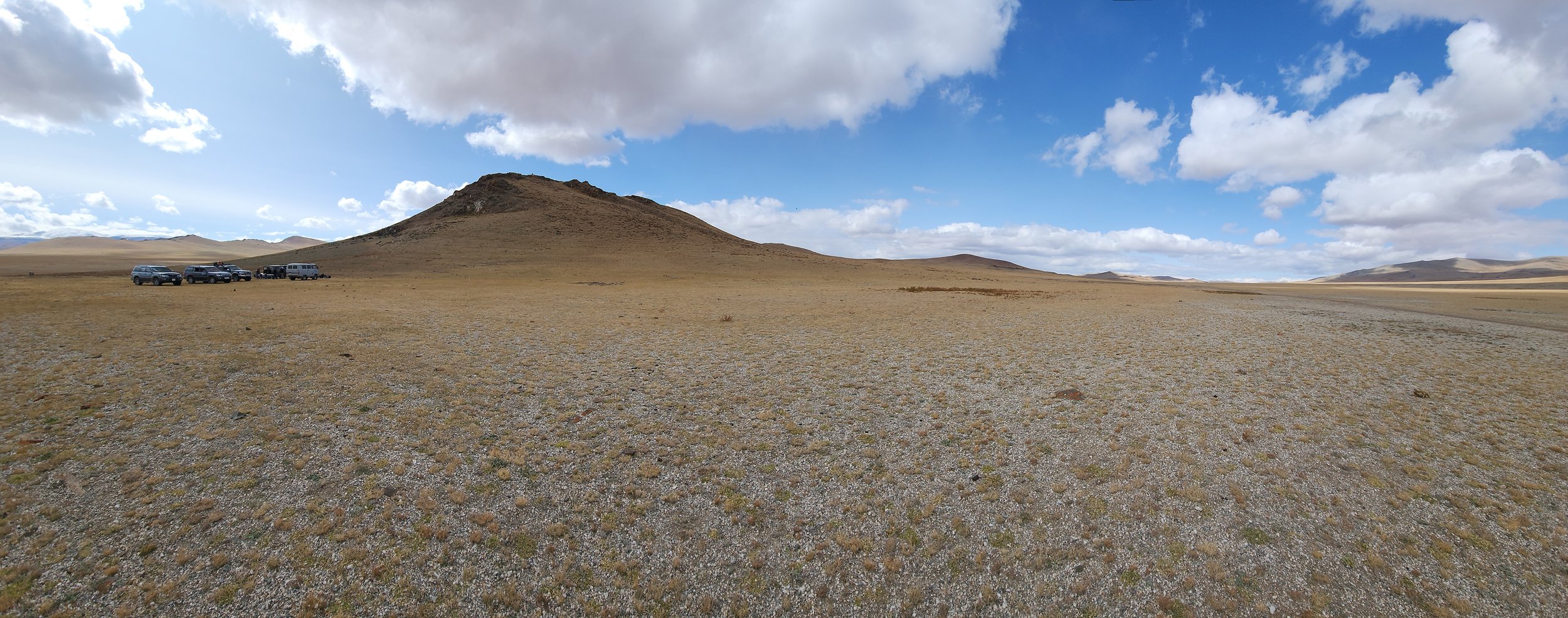The Steppes of Mongolia
I step from the four-passenger SUV and gaze across the land before me. The image I have imagined since reading about the steppes of Mongolia in childhood is of undulating land that doesn’t end until somewhere beyond the limit of my sight. This place is stunning and harsh and fantastically empty of almost anything but the natural world. Above the unending terrain is the eternal blue sky.
From my journal: “This immensity rivals anyplace I’ve ever seen. How to write about the size, the air, the sky, the quiet...” Certainly, time is altered. Our small group of eight westerners is gloriously offline. No Wifi. No internet. No cell service. I am twelve time zones away from home. The days are centered around the here-and-now of this place, de-magnetized from the distracting tethers of email and social media. The silence in the air seems to vibrate deliciously.
I cannot speak for all of Mongolia, but in more than 300 miles of traveling across the westernmost province of Bayan Ulgii, utility poles are rare. Roads are only suggestions. I can gaze for miles and see not a single fenceline.
The word “steppe” is derived from the Russian word for “flat, grassy plain.” The Eurasian Steppe extends across a vast temperate area, crossing the borders of 10 countries on its way from Manchuria westward through Mongolia, all the way to Hungary. I know all too well from experience that the two dimensions of a map can tell me only so much. The moment when terrain becomes three-dimensional is always a welcome blossoming. I see these plains, these streams with their ancient bridges, this up and down terrain, and am in awe! One day, our route winds over extra-large hills. In the distance we often see snow-capped peaks. The Altai Mountain range to the west includes mountains nearly 15,000 feet high.
With no street signs or road markers, I often wonder how our drivers can possibly know which of the many rutted tracks to take. Only occasionally do they miss a turn. We pass herds of goats and sheep, horses and camels, cows and yaks. We see the occasional gers of nomads, many of whom are getting ready to relocate to their winter camps. At midday, our crew pulls the vehicles into a circle against the wind, which can be bitter cold. Our impressive Kazakh cook generates good, warm food from within one of the support-team vans.
In the south, we come within a few kilometers of China. To the north, we creep similarly close to the border with Russia. For all the expanses here, Mongolians live with a certain quiet tension from being squeezed between these two superpowers. As if to illustrate the potential tumult of regional political realities, there is a memorable day of crossing over particularly chaotic, rocky, gullied terrain. It is a bouncy, bumpy process to pass through what resembles a gigantic gravel pit. It brings to mind the book (read while preparing for this trip), “On the Trail of Genghis Khan: An Epic Journey Through the Land of the Nomads.” Author Tim Cope tells of riding horseback for three years across the 6,000 miles of steppe from Karakorum to the Danube. Knowing his story leaves me very content to be in a warm car on the day of our “body-blender” experience in the giant gravel pit instead of riding through all this just on horseback.
This wild terrain was key to the success of the Mongolian Empire. Wrapped in animal furs, the warriors of Genghis Khan and his successors kept four horses each, and changed mounts often, enabling them to cover dozens of miles a day and sustain such a pace for weeks. The grassy steppes were especially important in providing forage for all their animals and thus meat for the humans. And there were others here, much longer ago. One day, we hike several miles up a valley near a sacred mountain to some of the largest intact petroglyphs in Central Asia. They date from the Neolithic period (11,000 BC) to the Bronze Age (6,000 BC).
Our brief visit yields so many wondrous views and scenes. It is too convenient to think that there is “nothing” out in that terrain. In the West these days, there is an inclination to fill up every available place. To my way of thinking, though, it is a relief to witness the vast open spaces of Mongolia. Here, people live in centuries-old circumstances (although modern conveniences such as electricity, solar panels, motorized vehicles, plastic containers and such have naturally crept in). Here, in one of the least-populated countries of all, there is ample space to stare into. This, to me, is magnificent.
Please go to www.kazakhtour.com (our tour operator Dosjan Khaval’s website) and www.wild-earth-journeys.com (our tour host Thomas Kelly’s website) for some wonderfully tempting opportunities to travel in Mongolia. I can heartily recommend both.








